The Secrets And Rituals Ancient Egyptian Women Used To Stay Beautiful
Makeup might seem like a modern phenomenon that has grown into a trillion-dollar business, but cosmetics were equally important to daily life in the ancient world.
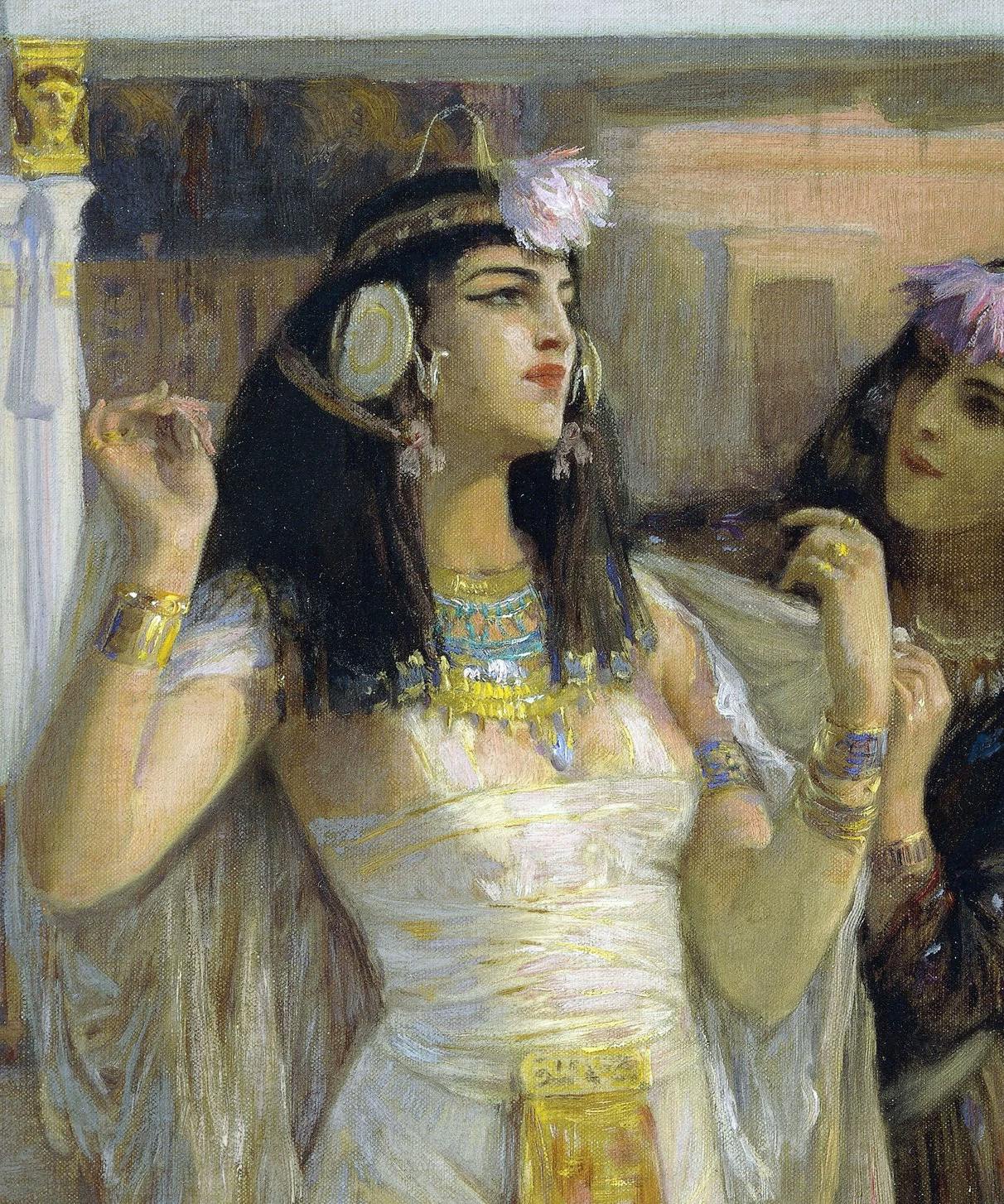
From the earliest era of the Egyptian empire (around 6,000 BC), men and women from all social classes liberally applied eyeliner, dyed their hair, used anti-aging face masks, and bathed in milk to preserve their soft skin.
And coincidentally, many of these beauty practices are not only distantly similar to what we have nowadays, but some might argue that theirs were even better. So let’s take a look at some of the beauty standards and practices in Ancient Egypt.
What Was Considered Beautiful in Ancient Egypt?
The Ancient Egyptians regarded beauty as a sign of holiness. Everything they used to enhance their beauty had a spiritual aspect to it, including cosmetics.
Both men and women wore makeup in Ancient Egypt, and cosmetic pallets have been found buried in gold with the deceased and served as grave goods in tombs, further emphasizing the idea that cosmetics were not only used for aesthetic purposes, but medicinal and religious ones too.
Additionally, Ancient Egyptians were also very concerned with their looks, and while there was only so much they could change back then, that didn't stop them from trying and even going to lengths of portraying themselves a certain way through sculptures and art.
A good place to start with beauty standards is the art of a time period. The way bodies were depicted in paintings and sculptures certainly didn't resemble the way people actually looked back then. It's no secret that the Ancient Egyptians wanted to leave an impression that they looked better than they actually did.
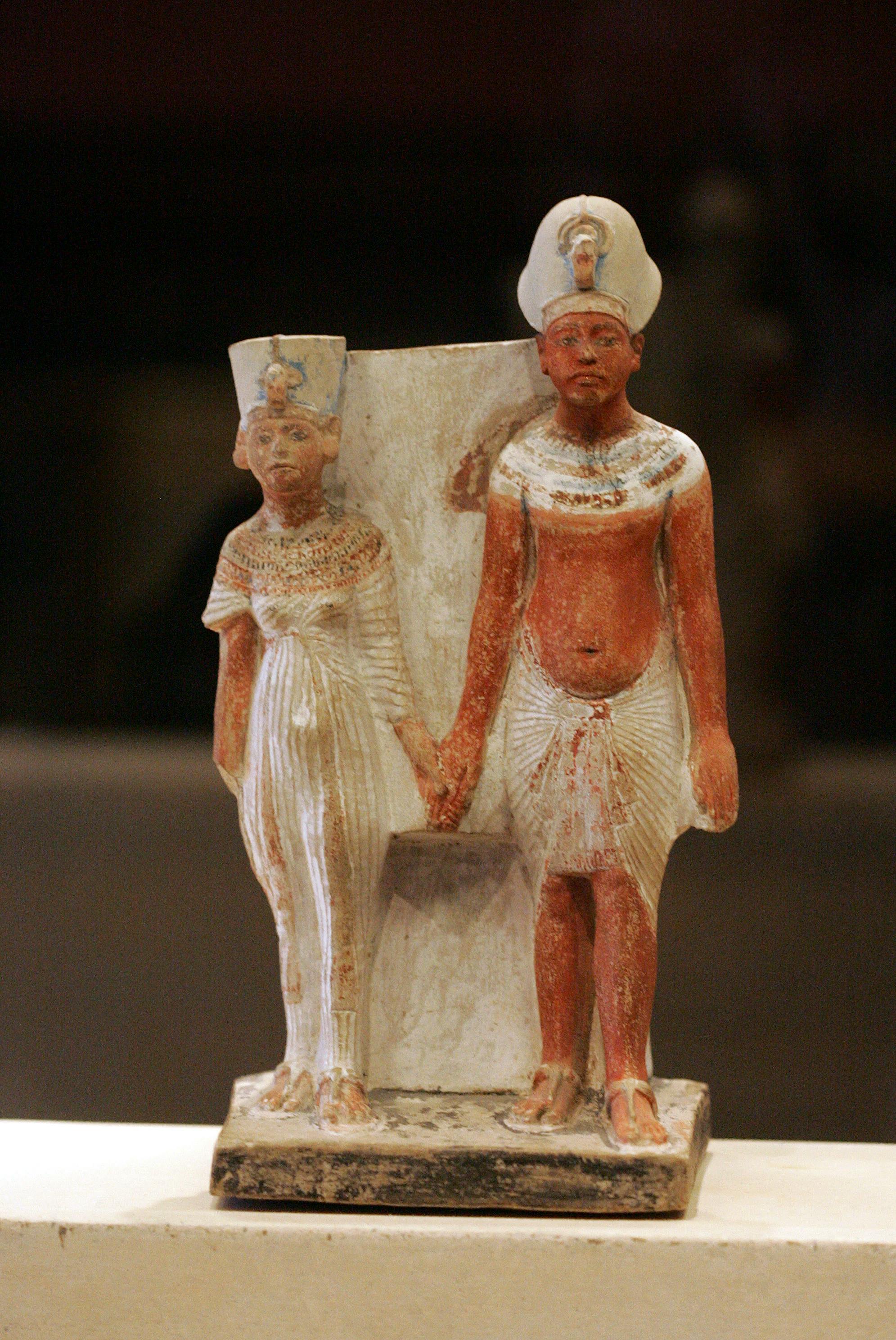
Statue of Akhenathon and Nefertiti, 1300s BC.
On average, Ancient Egyptians were shorter than modern-day humans. Women were about 5 feet tall, while men were typically around 5'5". Women also strived to be thin and have small but firm breasts. Curved hips and voluptuous bodies, on the other hand, weren't often depicted as generally a smaller frame was preferred and admired. Men emulated a long and lean physique, including broad shoulders that tapered down to a flat stomach.
When observing these beauty standards, it's very obvious how similar they are to our own modern-day ideals.
Kohl To Protect and Enhance the Eyes
In the eyes of the Greeks and the Romans, excessive adornment belonged only to prostitutes, and they favored more natural makeup, using kohl to finely line the eyes and extend the brow.
The Egyptians, however, shared a different view and smeared kohl over their eyes daily. Wearing both green malachite and black galena in bold designs, kohl exaggerated their eyes and enhanced their beauty, but it was also used for medicinal properties such as fighting off infections and protecting the eyes from sand and the sun.

Bust of Queen Nefertiti, 1370-1336 BC.
Kohl was made from heavy metals and contained low concentrations of lead salts. And although lead can be dangerous, the Egyptians would process and filter the materials for up to 30 days before creating the eyeliner prototype. They would then ground kohl with a pestle and mortar and mix it with oils or animals fats on palettes before applying it to the eyes using a small stick.
They also had an unusual application style and would draw even lines above and below the eyes and slightly arch the ends. You could say that the Egyptians were the first purveyors of the cat-eye we all know and love today.
Burnt Almonds To Shape the Eyebrows
Good brows were an even more important beauty trend that both men and women in Ancient Egypt followed religiously. To achieve the darkest, most filled-out eyebrows they could, the Egyptians would paint their eyebrows black with burnt almonds. They are also said to have aspired to unibrows, so they really took the filling out thing to another level.
Henna for Various Beauty Purposes
Henna was used in ancient Egypt to color hair and nails. Ancient Egyptians used to make this potent natural dye by drying and crushing the leaves of the Lawsonia Inermis shrub. Although the leaves are green, the dye produced ranges from an orange shade to a deep brick red-brown, which were the most popular colors to use.
Besides being trendy, henna was also considered to contain some conditioning properties that enhanced hair growth and nourished the nails, making them stronger and resistant to damage.
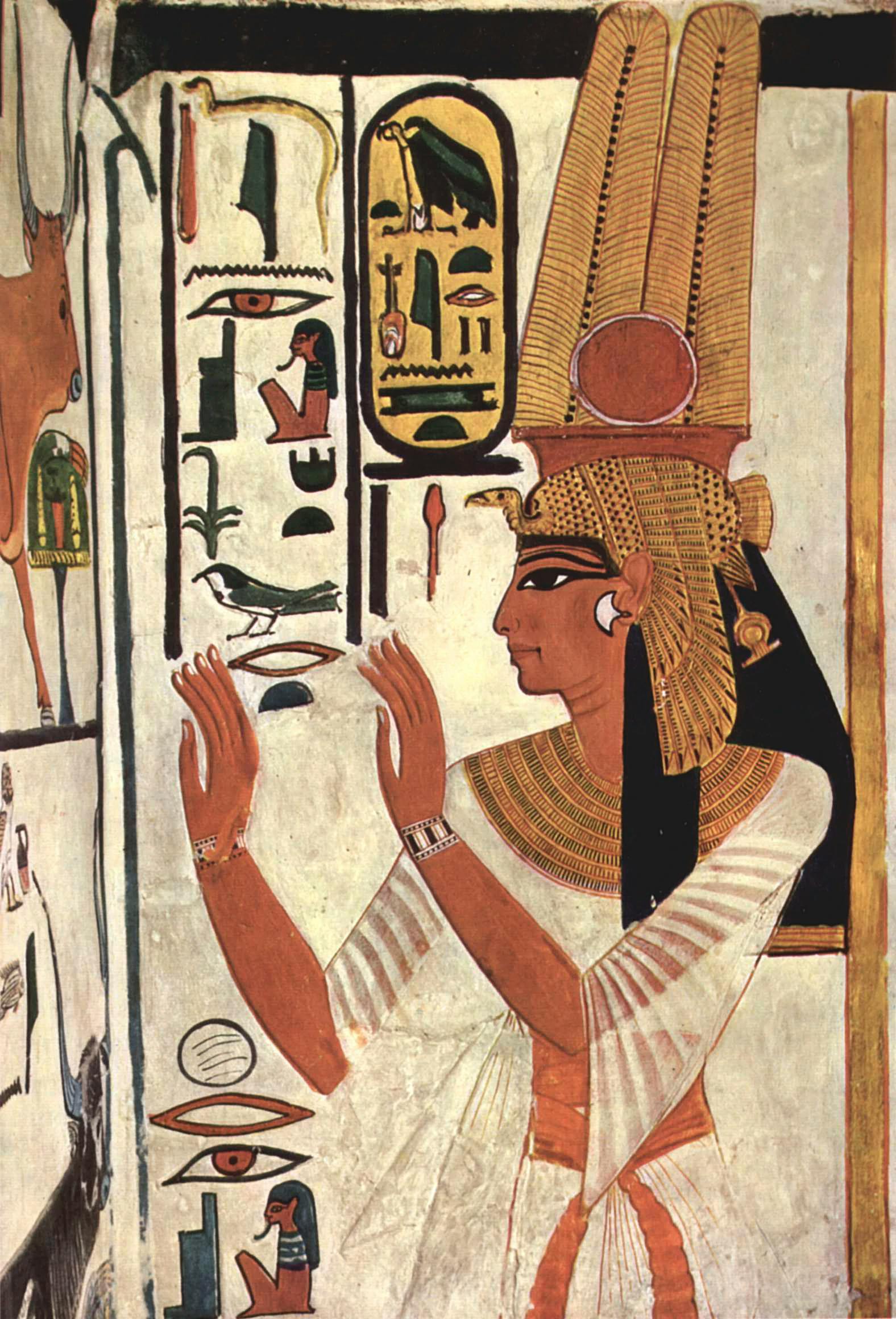
Painting of Queen Nefertari, c. 1255 BC.
Honey and Clay Face Masks
Honey was a popular beauty product in Ancient Egypt for its sweet smell and hydrating properties and was commonly used as a nourishing face mask.
In addition to being a powerful humectant, honey is also anti-inflammatory and antibacterial, meaning it not only made their skin super soft but also healed wounds and prevented them from getting infected.
Ancient Egyptians also used clay mixed with water or oils as face masks, as they believed it drew impurities from the skin and left the complexion fresh and clean.
Milk Baths
Cleopatra, the last ruler of Ancient Egypt, was renowned throughout history for her radiant skin, her stunning beauty, and the beauty practices she applied in order to achieve that.
One of these included frequent milk baths that kept her skin soft and beautiful. However, Cleopatra didn’t bathe in cow’s milk. The milk for her legendary baths was instead provided by donkeys. Legend has it that she required 700 lactating donkeys in order to supply the milk for her daily bathing regime.
What's more, Cleopatra wasn't alone in this bathing habit, which by our standards today would seem rather eccentric. Poppaea Sabina (30-65 AD), Emperor Nero’s second wife, was also a fan of the milk bath. She was told that in donkey’s milk “lurked a magic which would dispel all diseases and blights from her beauty.” She used to have baths she could sit in prepared solely with donkey’s milk, for which “whole troops of jennets used to attend her on her journeys,” Pliny the Elder records.
Historians record that Poppaea washed her face with donkey’s milk seven times a day in order to erase fine lines and wrinkles and preserve the whiteness of her skin.
Castor, Sesame, and Moringa Oil To Moisturize the Skin
If you didn't realize by now, the Ancient Egyptians were obsessed with beauty and the idealized version of themselves.
Pharaohs were always depicted as slender and young despite their true appearance. But, aside from art, wealthy Egyptians famously used oils such as castor, sesame, moringa, and animal fats to moisturize their skin, fight wrinkles, and preserve their youth.
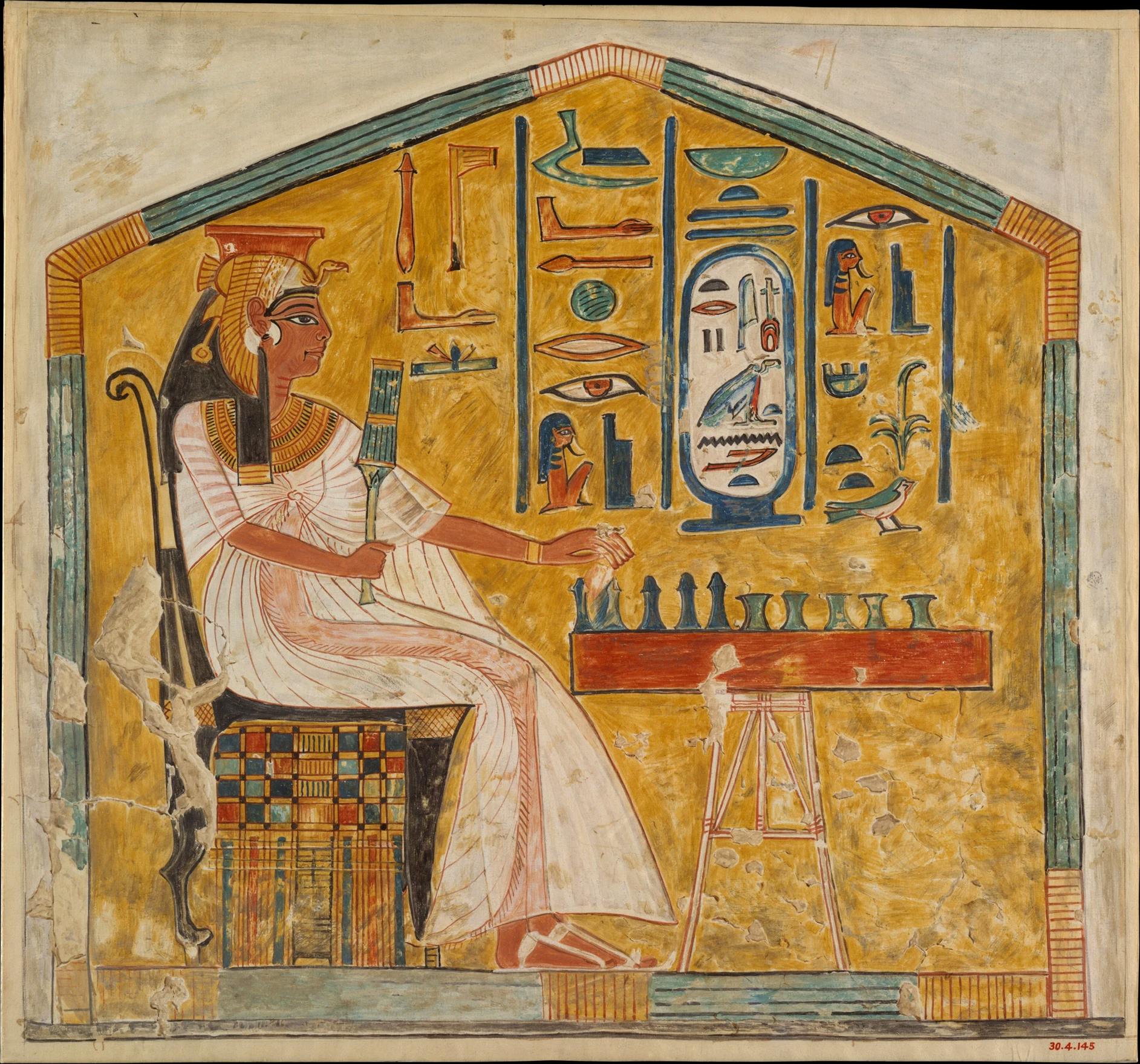
Painting of Queen Nefertari, c. 1255 BC.
Moringa oil, which they called Bak was, in fact, considered sacred and using it had spiritual meaning. Ancient Egyptians loved moringa oil so much that jars filled with this moisturizing goodness were also buried in Egyptian tombs alongside the dead.
Moringa oil is rich in vitamins C and E, oleic acid, anti-inflammatory compounds, zinc, and fatty acids – all of which are good for hair and skin.
Soap Paste
Cleanliness and hygiene were also highly favored among the ancient Egyptians, and although some of their beauty practices were questionable, others were legit better than what we have today.
Ancient Egyptians used to make a soap paste from natron, a naturally occurring alkaline mixture of sodium carbonate and sodium bicarbonate, with small quantities of sodium chloride and sodium sulfate. They then mixed it with clays, vegetable oils, and animal fat.
This soap paste was worked into a lather and used to cleanse the body as well as nourish and heal the skin and prevent wound infections.
Dead Sea Salts for Detox
The Dead Sea is known for its natural healing properties that replenish essential minerals lost during daily activities. So it's not surprising that the Ancient Egyptians figured out how good a dip in the sea felt after a day in the scorching sun and started implementing this as a beauty practice.
Whether it's for exfoliation, detox, or simply relaxation, dead sea salt baths were a common practice in Ancient Egypt.
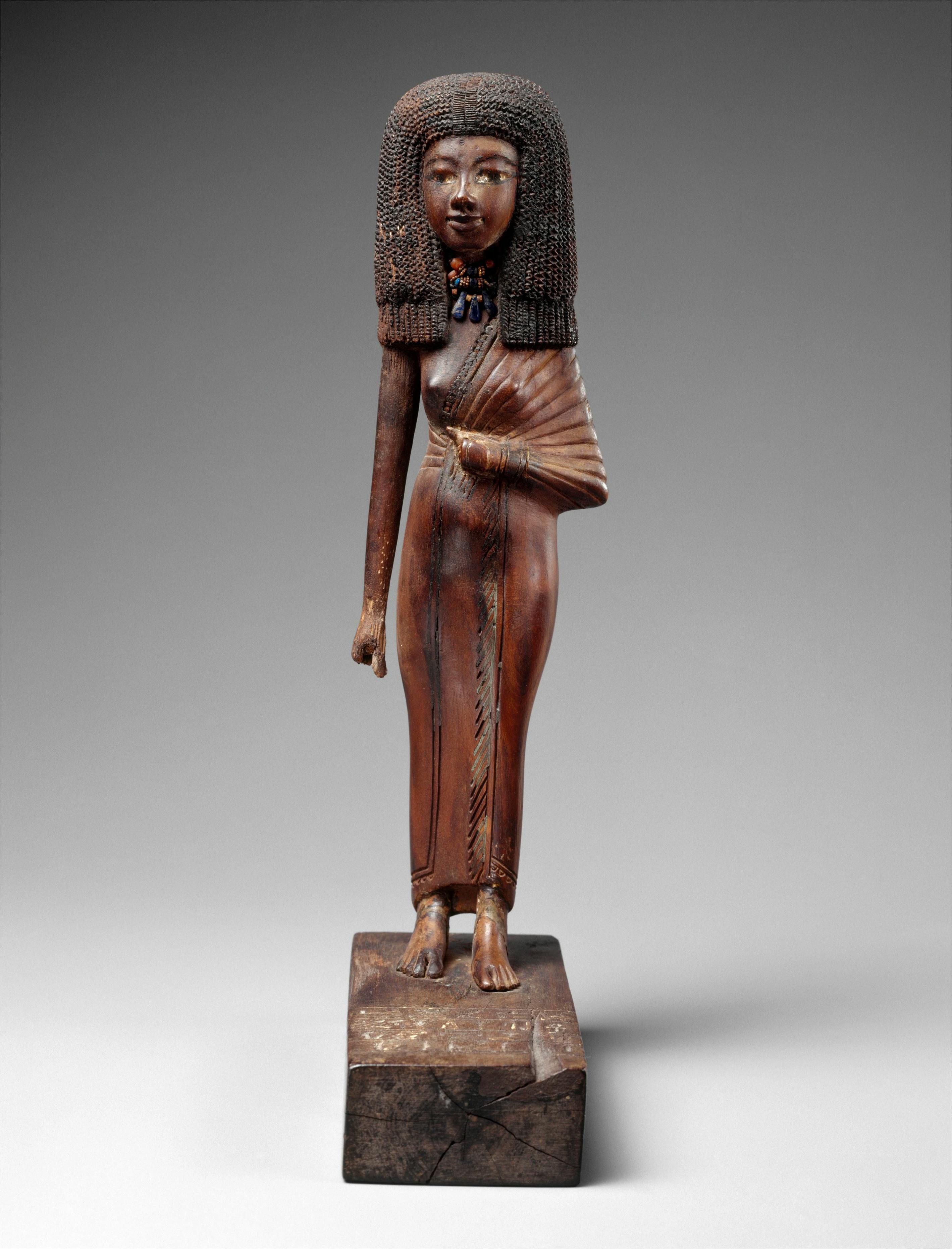
Statue of Queen Tiye, 1398-1338 BC.
Sugaring for Hair Removal
Hair removal has been a thing for a long time since even the Ancient Egyptians were attempting to get rid of unwanted hair. This lead them to invent a very efficient hair-removal method called sugaring. Sugaring is a technique that's safe and natural and consists of using a paste made from lemon, sugar, and water. There are no other additives and can be applied to any body part.
Sugaring removes the hair from the root and is a superior method of hair removal because it lasts longer, is less painful, and weakens the hair over time, so less and less will grow each time you do it. Sugaring also has exfoliating benefits as, besides hair, it also lifts the buildup of dead skin cells from the skin's surface, leaving only smooth and glowy skin behind.
Wigs As Status Symbols
Wigs became part of daily wear for the Ancient Egyptians, and they denoted rank, political role, social status, and religious piety. Wigs were also used as protection against the sun while keeping the head free from lice and other parasitic insects.
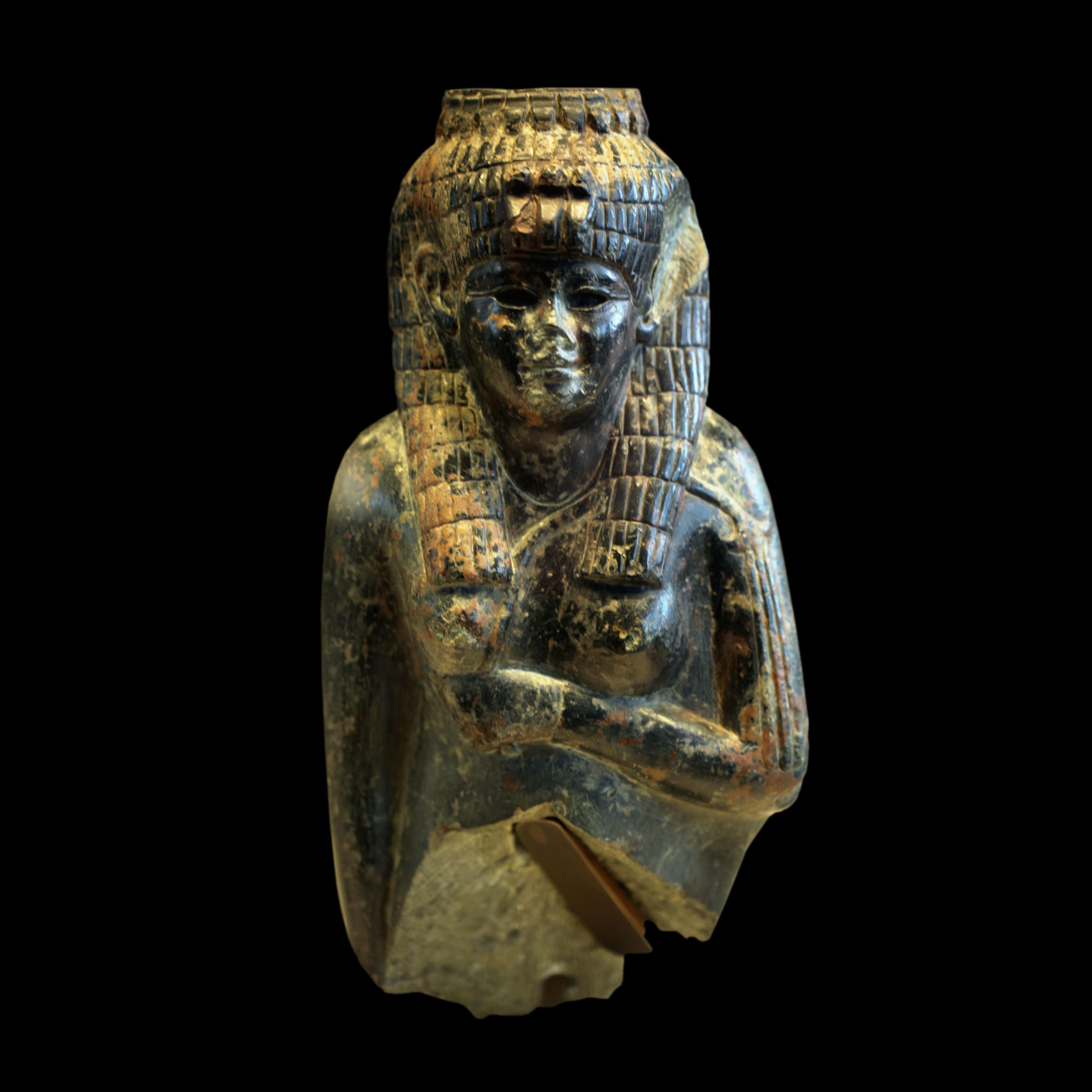
Statue of Queen Cleopatra VII, 69-30 BC.
The earliest Egyptian wigs were constructed of human hair, but cheaper substitutes such as palm leaf fibers and wool were also widely used. Women's wigs were adorned with braids and gold, hair-rings, and ivory ornaments, making them more stylish than men's wigs.
Closing Thoughts
Unlike some bizarre beauty practices like those from Victorian England and Renaissance Italy, it's safe to say that Ancient Egyptians had pretty great beauty routines that helped them maintain healthy skin and a youthful appearance.
Readers make our world go round. Make your voice heard in the official Evie reader survey.